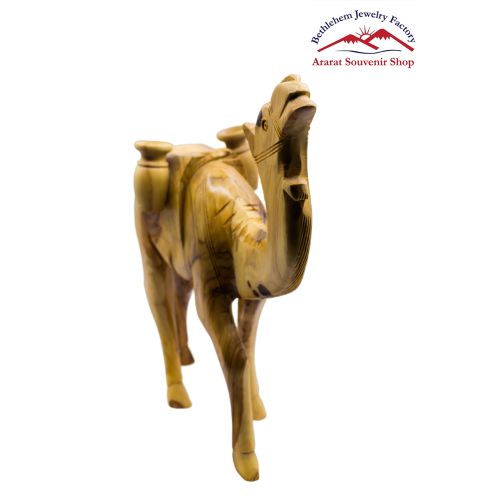St.George
The story of St. George is a captivating blend of history, legend, and faith, representing courage and steadfastness in the face of adversity. While many details of his life remain steeped in myth, the essence of St. George’s legacy endures as a symbol of virtue, bravery, and commitment to Christianity. The most famous narrative surrounding him is the tale of his fight against a dragon, rooted in the symbolism of good versus evil, faith versus fear.
St. George is believed to have been born in the late 3rd century in what is now modern-day Turkey, in the city of Cappadocia. He came from a noble Christian family and was raised in the faith. Following in his father’s footsteps, George joined the Roman army, where he served as a soldier and quickly rose through the ranks due to his courage and integrity. During this period, Christians faced persecution under the Roman Emperor Diocletian, who sought to eradicate the faith by subjecting its followers to cruel trials and executions. In this tumultuous landscape, St. George became a beacon of hope and resilience.
The most enduring tale associated with St. George is the legendary battle against a fearsome dragon that terrorized a city, often identified as Silene in Libya. The story unfolds with the dragon laying waste to the land, demanding sacrifices of livestock and, eventually, the townspeople’s children. To appease the beast, the citizens resorted to drawing lots to determine which child would be given to the dragon. One fateful day, the lot fell to the king’s daughter, who was to be offered as the next sacrifice. As she was led to the dragon’s lair, despair consumed the city.
In the midst of this despair, St. George rode into the town. Clad in armor and full of righteous zeal, he encountered the dragon before it could harm the princess. The tales describe a fierce battle between the knight and the beast, with George brandishing his lance and invoking the name of the Lord. After a grueling struggle, he emerged victorious, slaying the dragon and rescuing the princess. He then presented her to the townspeople as a symbol of salvation. George’s triumph over the dragon became a powerful metaphor for the Christian faith overcoming evil and idolatry, embodying the belief that God empowers the faithful to conquer fear and adversity.
Following this miraculous victory, St. George urged the citizens of the city to convert to Christianity and abandon their pagan practices. Motivated by his bravery and the proof of God’s power, many accepted his call to faith. St. George’s actions not only saved the princess but also instilled a renewed spirit of hope in the hearts of those who had previously cowered in fear of the dragon. His unwavering adherence to his beliefs and his willingness to confront danger resonated deeply with Christians and inspired countless followers.
St. George’s martyrdom was another significant chapter in his life story. After years of valor and faith, he was eventually arrested for his Christian beliefs during the Diocletian persecution. Refusing to renounce his faith despite extreme torture and execution methods, George boldly proclaimed his allegiance to Christ. According to tradition, he was ultimately beheaded in 303 AD, becoming a martyr and solidifying his status as one of the most revered saints in Christianity.
The veneration of St. George spread rapidly, particularly during the Middle Ages, as stories of his bravery and martyrdom inspired knights and Christians throughout Europe. He became the patron saint of soldiers, chivalry, and causes against oppression, a symbol of courage and honor. His iconography often depicts him as a noble knight in armor, mounted on a horse, slaying the dragon—a powerful representation of the struggle against evil and adversity that continues to resonate with believers today.
Celebrations in honor of St. George are observed globally, particularly on his feast day, April 23rd. In England, he is celebrated as the national patron saint, a figure emblematic of English heritage, valor, and integrity. Various countries, including Greece, Portugal, and Ethiopia, also revere St. George as their patron, often incorporating local customs and traditions into the celebrations.
In art and literature, the story of St. George has inspired countless depictions, ranging from paintings and sculpture to poems and plays. Artists through the ages have immortalized his gallant struggle against the dragon, creating vivid images that convey themes of heroism and unwavering faith. The narrative serves not only as a testament to the knight’s bravery but also as a reminder to Christians that they are called to confront the dragons in their own lives—be it personal struggles, societal injustices, or moral dilemmas—through faith, hope, and courage.
The enduring legacy of St. George lies in his embodiment of the values of bravery, faith, and righteousness. His story encourages believers to confront their fears, to persevere in faith amid adversity, and to act with compassion and integrity. As a model of heroism and a beacon of hope, St. George continues to inspire countless individuals across the globe to lead virtuous lives, embracing the call to stand firm in their beliefs and to champion justice in a world often fraught with challenges. His tale remains timeless, resonating with audiences and serving as a testament to the power of faith in the face of overwhelming odds.












Reviews
There are no reviews yet.